Ham and pork are two popular types of meat that many people often confuse with one another. While these two types of meats come from the same animals, they differ in how they are prepared, their nutritional value, and the taste they offer. Both ham and pork have unique qualities, making them suitable for different dishes, depending on your preference. Ham, for instance, is commonly associated with festive occasions and is served in large chunks. On the other hand, pork meat is consumed in many ways and can be grilled, baked, fried, or roasted. This article will delve into the differences between ham vs pork and help you understand which is best for your meal.
What is Ham?
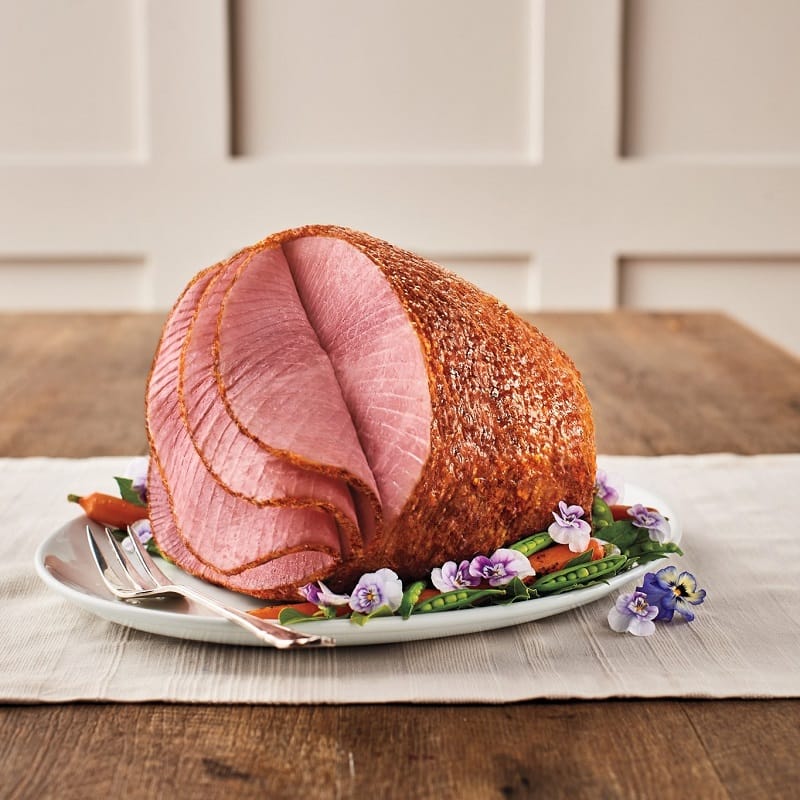
Ham is a popular meat that many people around the world enjoy. It is cured meat made from the hind leg of a pig and can be eaten in various ways. Whether you prefer it sliced thin and served on a sandwich or thick and juicy with mashed potatoes, ham is a versatile ingredient in many dishes. Many different types of ham are available, each with its unique flavor and texture. Some of the most popular styles include:
- Smoked ham: This ham is cured with smoke, which gives it a distinctive flavor. It can be eaten cold or warmed up and is often used as a main ingredient in ham and bean soup dishes.
- Country ham: This type of ham is salt-cured and often smoked. It is typically served in thin slices with a salty, savory flavor.
- Honey ham: This ham is coated with a sweet glaze made from honey and other ingredients. It is often used in sandwiches and is a popular choice for holiday meals.
- Black Forest ham: Black Forest ham is named after the Black Forest region of Germany, where it originated. It is made from pork that has been dry-cured and smoked and has a rich, smoky flavor.
Overall, ham is a delicious and versatile meat that can be enjoyed in various ways. Whether you prefer it sweet, smoky, or savory, there will surely be a type of ham that will satisfy your taste buds.
What is Pork?
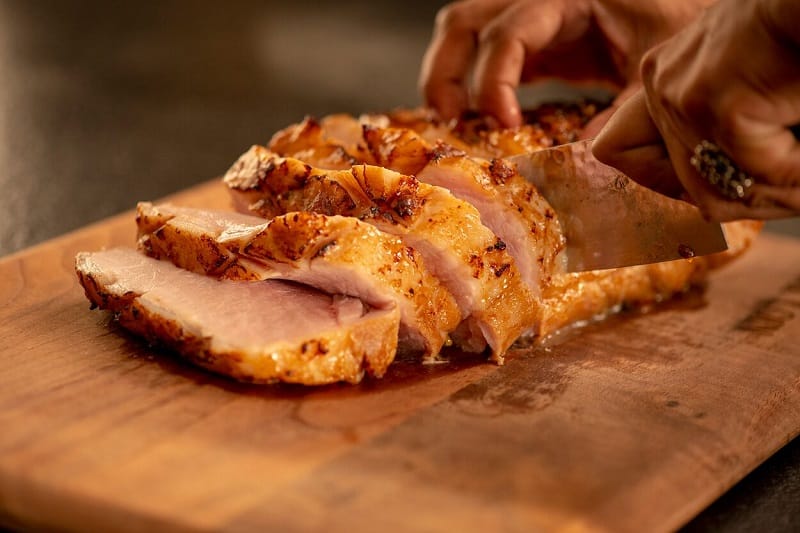
Pork is one of the most widely consumed meats in the world. It is a versatile meat that can be prepared in various ways, making it a popular choice for many dishes. Pork is often used in a variety of dishes, including sausages, bacon, ham, and pork chops.
There are many different cuts of pork, each with its distinct flavor and texture. Some of the most popular cuts of pork include pork chops, pork tenderloin, pork loin, and pork belly. These cuts can be prepared in many ways, including grilling, roasting, and frying.
One of the reasons that pork is so popular is its versatility. Pork can be used in many dishes, including soups, stews, and stir-fries. It is also popular barbecue meat and is often used to make sausages and other cured meats.
What’s the Difference Between Ham vs Pork?
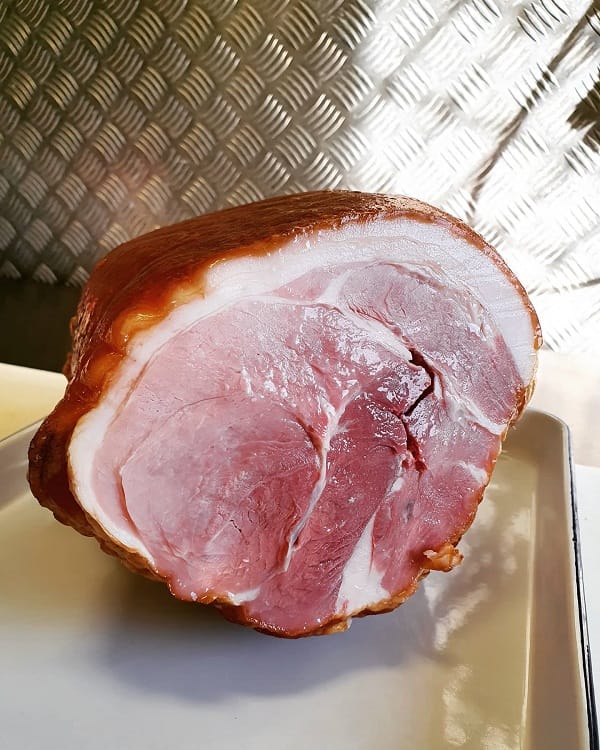
Ham and pork are two that are often confused. While they are both made from pigs, some important differences exist. Ham comes explicitly from the upper hind leg of the animal, whereas pork is a catch-all term for any meat derived from a pig. Ham is cured, usually with salt or a combination of salt, sugar, and smoke, while pork is uncooked and uncured.
This means that while ham is technically a type of pork, the terms are not interchangeable. It’s also worth noting that not all pork meat is ham, but all ham is pork.
However, if you want to dig deeper into the difference between ham and pork like a real chef, here is the information.
Color
- One of the most noticeable differences between ham and pork is the color. Pork is usually light pink, while ham ranges from pink to deep red. This is because ham is made from pork that has been cured, smoked, or both. Curing involves adding salt and other seasonings to the meat, which can affect the color.
Flavor
- Another major difference between ham and pork is the flavor. Pork has a mild taste that can vary depending on the cut of meat. Ham, on the other hand, has a distinct smoky and salty flavor. This is due to the curing and smoking process that ham undergoes. Some hams are also glazed with a sweet sauce, which can add another layer of flavor.
Nutritional
- Regarding nutritional value, pork and ham are similar in some ways and different in others. Both are good protein sources, but ham is higher in sodium due to the curing process. Pork is also higher in thiamine and niacin, two B vitamins that are important for energy production. However, ham is a good source of iron, which is important for healthy blood cells.
Calories
- On average, one serving of pork (3 ounces) contains around 150 calories. One serving of ham (also 3 ounces) has around 160 calories. However, this can vary depending on the type of ham and how it’s prepared.
Fat Content
- When it comes to the fat content, ham and pork differ significantly. Pork is the meat that comes from pigs, and it can have varying levels of fat content depending on the cut. For example, pork belly is a fatty cut of meat, while pork tenderloin is leaner.
- On the other hand, Ham has cured meat from a pig’s hind leg. Ham is typically higher in fat content than pork and is often saltier due to the curing process.
Preparation
- Pork can be prepared in various ways, including roasting, grilling, sautéing, and more. It can also be marinated or seasoned to add flavor.
- On the other hand, Ham is already cured and cooked, so it does not require as much preparation as pork. However, it can be glazed or baked to enhance its flavor.
Shelf Life
- Due to its curing process, ham has a longer shelf life than pork. Unopened, a whole ham can last for up to six months, while sliced ham can last for up to two weeks in the fridge.
- Pork has a shorter shelf life and should be consumed within a few days of purchase or properly stored in the freezer.
Price
- The price of ham and pork can vary based on the cut, quality, and where it is purchased. Generally, ham tends to be more expensive than pork due to its longer shelf life and the curing process.
- When purchasing pork, it is important to consider the quality and the cut. Higher-quality cuts like pork tenderloin tend to be more expensive, while fattier cuts like pork belly are more affordable.
Whether you prefer ham’s distinctive flavor or pork’s versatility, there’s no denying that both can be delicious.
Read more:
How Are Hams Made Differently From Other Pork Products?
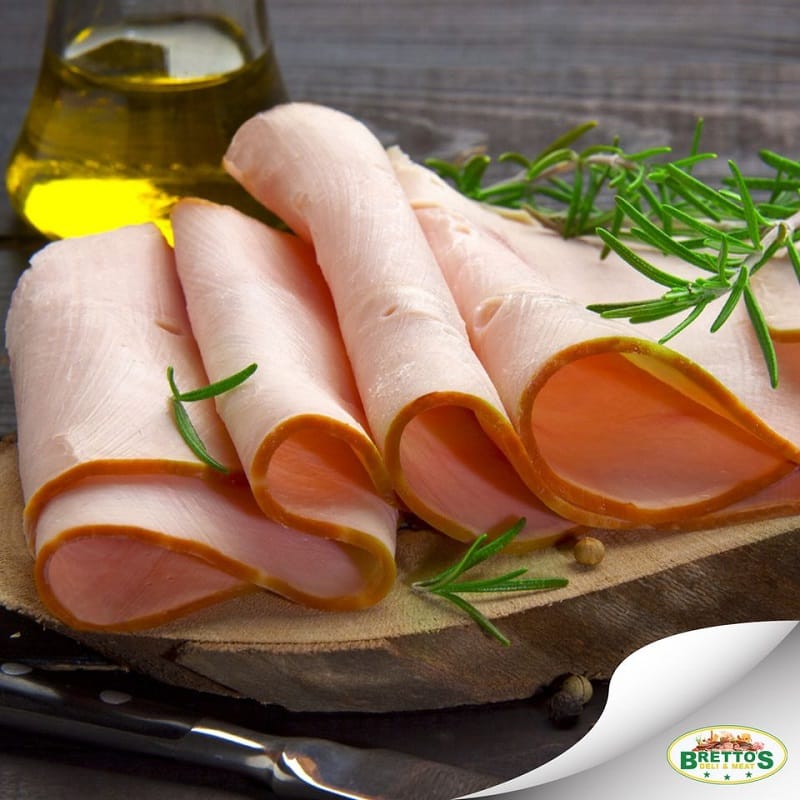
Have you ever wondered how hams are made differently from other pork products? Hams are popular for holiday dinners, but what sets them apart from other pork products?
First, let’s explore how hams are made and what makes them unique.
- Hams come from the pig’s hind leg and are usually larger than other cuts. The hind leg is typically broken down into three sections: the shank, the butt, and the center. The shank end is the lower portion of the leg and is typically used for bone-in hams, while the butt end is the upper portion of the leg and is usually used for boneless hams.
- The next step is to cure the ham. This involves rubbing the meat with salt, sugar, and other seasonings. The ham is then placed in a cool, dry environment for several weeks to allow the cure to penetrate the meat. This process gives the ham its distinct flavor and texture.
- After the curing process is complete, the ham is typically smoked. Smoking the ham helps to enhance the flavor further and preserve the meat. The type of wood used for smoking can also affect the flavor of the ham. Hickory, apple, and cherry woods are popular choices for smoking hams.
- Once the smoking process is complete, the ham is cooked. This can be done by baking, boiling, or smoking the ham again. The cooking process helps to tenderize the meat and make it ready to eat.
So, what makes hams different from other pork products? The curing and smoking process is what sets hams apart. Bacon and sausage are also cured, but they are typically smoked for a shorter period of time. Pork chops and other cuts of meat are not cured or smoked at all.
In addition to curing and smoking, hams are often served as a whole piece of meat. This makes them a centerpiece for holiday dinners and special occasions. Other pork products are usually served in smaller portions and are often used as ingredients in other dishes.
In conclusion, hams are made differently from other pork products due to their unique curing and smoking process. This process gives hams their distinct flavor and texture. Hams are also typically served as a whole piece of meat, making them a centerpiece for special occasions.
Is It Better To Choose A Bone-In Or Boneless Ham For Holiday Meals?
While both options have pros and cons, a few key factors must be considered before deciding.
- First, let’s examine the differences between the two. As the name suggests, a bone-in ham still has the bone intact. This can make it slightly more difficult to carve, but many argue that the bone adds flavor and moisture to the meat. On the other hand, a boneless ham has had the bone removed, making it easier to slice and serve.
- One important factor to consider is the size of your gathering. If you’re feeding a larger group, a boneless ham may be the better option simply because it’s easier to carve and serve. However, if you’re feeding a smaller group and want to make a statement with your holiday meal, a bone-in ham can be an impressive centerpiece that will impress your guests.
- Another consideration is your personal preference when it comes to flavor and texture. Some people argue that a bone-in ham has more flavor due to the bone, while others prefer the texture of a boneless ham. Ultimately, this comes down to personal preference and taste.
- It’s also worth noting that the price difference between bone-in and boneless hams can vary. Generally, bone-in hams are slightly more expensive due to the added weight of the bone. However, prices can vary depending on the brand and quality of the meat.
When it comes down to it, there’s no right or wrong answer when it comes to choosing between a bone-in or boneless ham for your holiday meal. It all comes down to your personal preferences and the size of your gathering. If you’re feeding a larger group or prefer the ease of carving a boneless ham, go with that option. If you want to make a statement with an impressive centerpiece and don’t mind the extra effort of carving, a bone-in ham may be the way to go.
Are There Any Tips For Selecting The Best Ham From The Store?
Ham is a popular and delicious meat found in most grocery stores. However, with so many options available, choosing the best ham for your needs can be difficult. Here, we’ll share tips for selecting the best ham from the store.
- Consider the Type of Ham: There are many different types of ham available, including smoked, cured, and fresh. Each type has its unique flavor and texture. Smoked ham is typically the most popular, and it has a rich, smoky flavor that pairs well with various other ingredients. Cured ham generally is saltier than smoked ham and has a firmer texture. Fresh ham is not cured or smoked and is typically cooked using a variety of seasonings and spices.
- Look for a Quality Brand: When selecting ham, choosing a quality brand is essential. Look for a brand that uses high-quality ingredients and has a good reputation for producing quality products. Some popular ham brands include Smithfield, Hormel, and Boar’s Head.
- Examine the Color and Texture: The color and texture of the ham can provide important clues about its quality. Look for a ham that has a pinkish-red color and a firm texture. Avoid ham that appears gray or has a mushy texture. These can be signs that the ham is past its prime.
- Check the Expiration Date: Always check the expiration date on the package before buying ham. Ensure that the ham you believe has not expired or is close to its expiration date. Expired ham can be unsafe and taste less good than fresh ham.
- Consider the Cut: Ham can be sold as a whole or in various cuts, including sliced, diced, and shredded. Consider the cut that best suits your needs. For example, sliced ham may be the best choice if you plan to make ham sandwiches. The diced ham may be a better option for making ham and bean soup.
- Read the Label: Before buying ham, read the label carefully. Look for information about the ingredients, nutritional content, and any additives or preservatives. Some hams may contain added sugar or sodium, so it’s important to be aware of these ingredients if you’re trying to limit your intake of these substances.
What Is The Difference Between Ham Hock And Pork Hock?
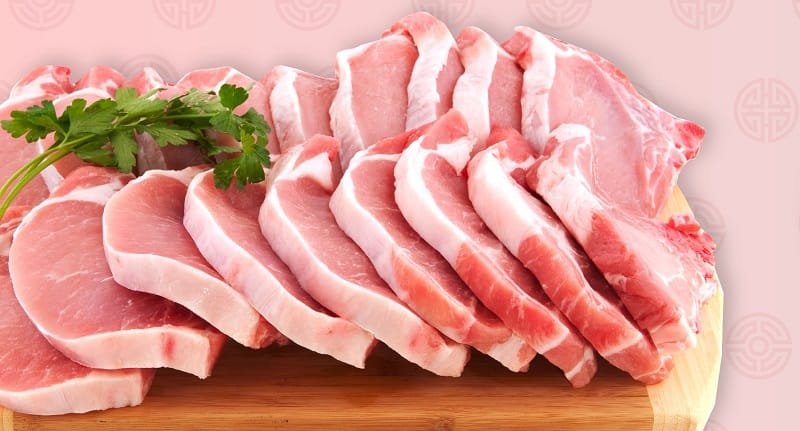
While these two cuts of meat may sound similar, they are quite different. Now, we will explore the differences between ham and pork hock and help you understand which is best for your next dish.
First, let’s define what each of these cuts is. A Ham hock is a meat cut from the pig’s leg below the ham. It is often cured and smoked, which gives it a distinct flavor and texture. On the other hand, a pork hock is a cut of meat that comes from the pig’s front leg, just above the foot. It is also referred to as pork knuckle or shank and is often used in dishes like pork roast, sausages, and stews.
One of the key differences between ham hock and pork hock is the flavor. Ham hock has a strong, smoky flavor that comes from the curing and smoking process. This makes it a great addition to dishes that require a bold flavor, such as soups and stews. Pork hock, on the other hand, has a milder flavor that is more subtle and delicate. It is often used in dishes that require a more nuanced flavor, such as braised pork or slow-cooked stews.
Another difference between these two cuts of meat is the texture. Ham hock has a firmer, meatier texture, ideal for slow cooking. The meat becomes tender and falls off the bone, perfect for dishes like split pea soup or collard greens. Pork hock, however, has a softer texture that is best when cooked slowly and gently. It can be used in dishes like pork roast or sausages, but it requires a longer cooking time to develop its flavor and texture fully.
Regarding nutrition, ham, and pork hocks are relatively high in fat and calories. However, ham hock tends to be higher in sodium due to the curing process. If you are watching your sodium intake, you may want to choose pork hock over ham hock.
In summary, ham hock has a strong, smoky flavor and is ideal for slow cooking, while pork hock has a milder flavor and is best when cooked slowly and gently. If you are looking for a meaty, bold flavor, choose ham hock. Go for pork hock if you want a more subtle, delicate flavor.
What Can I Cook With Ham?
Ham is a delicious and easy-to-cook meat that can be used in various dishes, from breakfast to dinner and everything in between. Here are just a few ideas for what you can cook with ham:
1. Ham and Cheese Omelette: Whisk together a few eggs, add chopped ham and shredded cheese, and cook in a nonstick pan until the eggs are set. Add some fresh herbs or veggies for extra flavor and nutrition.
2. Ham and Bean Soup: This classic comfort food is perfect for chilly days. Start by sautéing some chopped onion and garlic in a pot, then add diced ham, beans (canned or cooked from scratch), and chicken broth. Simmer until the flavors meld and the beans are tender.
3. Ham and Pineapple Pizza: Start with a pre-made pizza crust or make your own, then add tomato sauce, shredded cheese, chopped ham, and sliced pineapple. Bake until the cheese is melted and bubbly.
4. Ham and Cheese Sandwich: Layer sliced ham and your favorite cheese (cheddar, Swiss, or provolone all work well) on bread, then toast or grill until the bread is crispy and the cheese is melted.
5. Ham and Egg Fried Rice: Sautéing some diced ham and scrambled eggs in a pan, then add cooked rice, soy sauce, and any veggies you like (such as peas, carrots, or bell peppers). Fry until everything is heated through and the rice is slightly crispy.
6. Ham and Cheese Frittata: Whisk together some eggs and milk, then add chopped ham, shredded cheese, and any veggies or herbs you like. Pour into a greased pan and bake until set and golden brown.
7. Ham and Potato Hash: This hearty and savory dish is perfect for breakfast or dinner. Start by sautéing some diced onion and bell pepper in a pan, then add diced potatoes and chopped ham. Cook until the potatoes are tender and browned, then serve with eggs or as a side dish.
What Can I Make From Pork?
Pork is one of the most versatile meats out there. If you wonder, “What can I make from pork?”. There are so many different things you can make from porkWe’ve got some great ideas to get you started.
1. Pulled Pork: Pulled pork is a classic dish perfect for feeding a crowd. It’s easy to make, too! Slow-cook a pork shoulder with barbecue sauce until it’s tender enough to pull apart with a fork.
2. Pork Chops: They’re easy to prepare and can be cooked in various ways. Pan-fried pork chops are a classic, but you can also grill, bake, or even stuff them.
3. Pork Tenderloin: Pork tenderloin is lean and tender, making it a great option for a healthy meal. Marinate it in your favorite flavors, then grill or roast it until it’s cooked. Serve it with a side of rice or quinoa for a nutritious dinner.
4. Ham: Ham is a popular choice for holiday meals, but it’s also great for sandwiches, salads, and more.
5. Bacon: Bacon can be used in many different ways. Crumble and sprinkle it on a salad or baked potato, or wrap it around chicken or shrimp for a tasty appetizer.
6. Sausage: Make a sausage and egg breakfast casserole, or grill some sausages for a backyard barbecue. You can even use sausage in pasta dishes, like spaghetti and meatballs.
7. Carnitas: It’s typically served in tacos or burritos, but you can also use it as a topping for nachos or pizza.
8. Pork Ribs: Pork ribs are another classic barbecue dish. Slow-cook them with barbecue sauce until tender enough to fall off the bone.
9. Pork Belly: It’s a popular ingredient in ramen and bao buns. But you can also cook it in the oven with soy sauce and honey for a tasty dinner.
FAQs
Is Ham Safe To Eat Raw, Like In A Charcuterie Board, Or Should It Always Be Cooked?
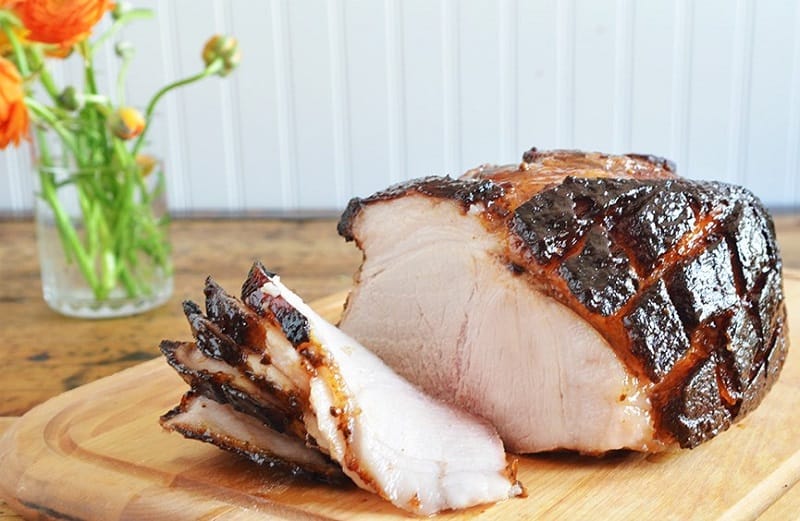
The answer is yes! Ham can be substituted for pork in recipes using a 1:1 ratio. However, it is important to note that there are differences between ham and other pork cuts. For example, ham has a different texture and flavor from fresh ham or pork chops. The fat and salt content of ham may also affect the final dish.
Can You Substitute Ham for Pork in Recipes?
It is generally unsafe to eat ham raw, whether on a charcuterie board or not. However, there are exceptions. For example, prosciutto is salt-cured and air-dried, making it safe to eat without cooking. Bresaola, a type of top beef round, is also dried and cured, allowing it to be safely consumed without cooking. But for the most part, the ham should be cooked before consuming it to avoid the risk of foodborne illness.
There are many delicious ways to enjoy cooked ham, whether as a sandwich, in a quiche or omelet, or as a centerpiece for a holiday meal. While trying some raw ham on a charcuterie board may be tempting, it’s always better to err on the side of caution and stick with cooked ham to ensure safety and enjoyment.
Ham Vs Pork – The Bottom Line
In conclusion, the debate about ham vs pork is an interesting one. While technically, ham is a type of pork, the two have distinct differences. The choice between ham and pork comes down to personal preference and what you use it for. Both options offer unique flavors and benefits, so why not try both and see which one you prefer? Whether you are a fan of ham or pork, there is no denying that both are delicious and worth exploring in your cooking and meal planning.
References:
- https://spoonuniversity.com/lifestyle/23-common-types-of-cured-meats
- https://books.google.com/books?id=Nb9RAQAAMAAJ&pg=PA517&lpg=PA517&dq=What%5C%27s+the+Difference+Between+Ham+vs+Pork?&source=bl&ots=FoaCp-dOS0&sig=ACfU3U2gZLJULMyHdMHMogZGIyq9U34RNA&hl=en&sa=X&ved=2ahUKEwjn87XU9aD-AhUCkIkEHX3aCf4Q6AF6BAg6EAM

Hey readers! Chip Holland here, and I’m a Manager of this website. My passion for writing about it only matches my passion for BBQ. Follow my blog for mouth-watering recipes, tips, and tricks for the perfect smoke, grill, and BBQ. I’m sure you won’t be disappointed!
